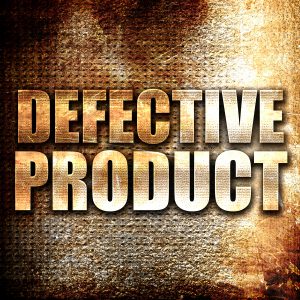What Evidence Do I Need To Collect In Defective Product Cases?
 Michael Babboni
Personal Injury
Product liability cases can be somewhat more complex than other types of personal injury lawsuits. Proving defect in a product can take some technical knowledge, determining if a manufacturer was aware of the potential for danger is another difficult hurdle, and evidence is more important than ever in these types of cases. So, if you’ve been injured by a faulty product, do you know what type of evidence to bring to your attorney?
Michael Babboni
Personal Injury
Product liability cases can be somewhat more complex than other types of personal injury lawsuits. Proving defect in a product can take some technical knowledge, determining if a manufacturer was aware of the potential for danger is another difficult hurdle, and evidence is more important than ever in these types of cases. So, if you’ve been injured by a faulty product, do you know what type of evidence to bring to your attorney?The Top Pieces Of Evidence To Collect
When you see your St. Petersburg personal injury attorney, they’ll want you to have some evidence in hand that will help them to successfully support your case. While your attorney can clue you in on what to bring after an initial visit, you can save a little time by being prepared. The top pieces of evidence to collect in a defective product case are:
• Medical records – Medical records are one of the single most important pieces of evidence to collect in support of your case. What they show is that you were in fact harmed by the defective product, the extent of your injuries, and what lasting medical needs may be attributed to the incident in question. Your medical records tell the complete story, medically, of your injury and all that has come, or will come, along with it.
• Your bills – Medical bills, missed bills or late payments due to being incapacitated by your injury, and other relevant bills will serve as proof of your need of a certain settlement amount. Any bills that have been incurred or affected by the faulty product injury should be taken to your St. Petersburg lawyer for review, and if deemed relevant to the case, collected to craft your desired settlement package.
• Tax returns and pay stubs – In some instances, an injury caused by a defective product can cause you to miss work, and these wages may be compensated as part of your personal injury settlement. Bringing along any tax returns or pay stubs that prove lost wages over a period of time while you were unable to work due to the defective product incident can help you to make this part of your settlement.
• Photos and videos – Like in any personal injury case, photos and video of your injuries can go a long way. If you’re able, have a friend, co-worker, spouse, or family member take photos of your injuries right away after the accident has occurred. If this isn’t possible, take photos or video of your injuries as soon as you are able.
• Relevant product documents – If you’ve been injured using a product as advertised, bringing along an advertisement that shows you were using the product in what you could have reasonably deemed a “correct” fashion is a good idea. If there is relevant information about the directed use of the product in the manual, you may wish to bring the manual. Your St. Petersburg attorney will be able to provide more information on the best documents to bring along with you.
• Witnesses – Both an expert witness skilled and knowledgeable in the technical aspects of the product as well as witnesses who may be been there for the accident or resulting injuries can provide invaluable testimony in your personal injury case.
With the right evidence in hand, those injured in defective product cases can collect the compensation they need to ensure a smooth recovery. While defective product cases do tend to be more difficult or complex cases when compared to other personal injury situations, like slip and fall or car accidents, having the right evidence will truly make all the difference.
